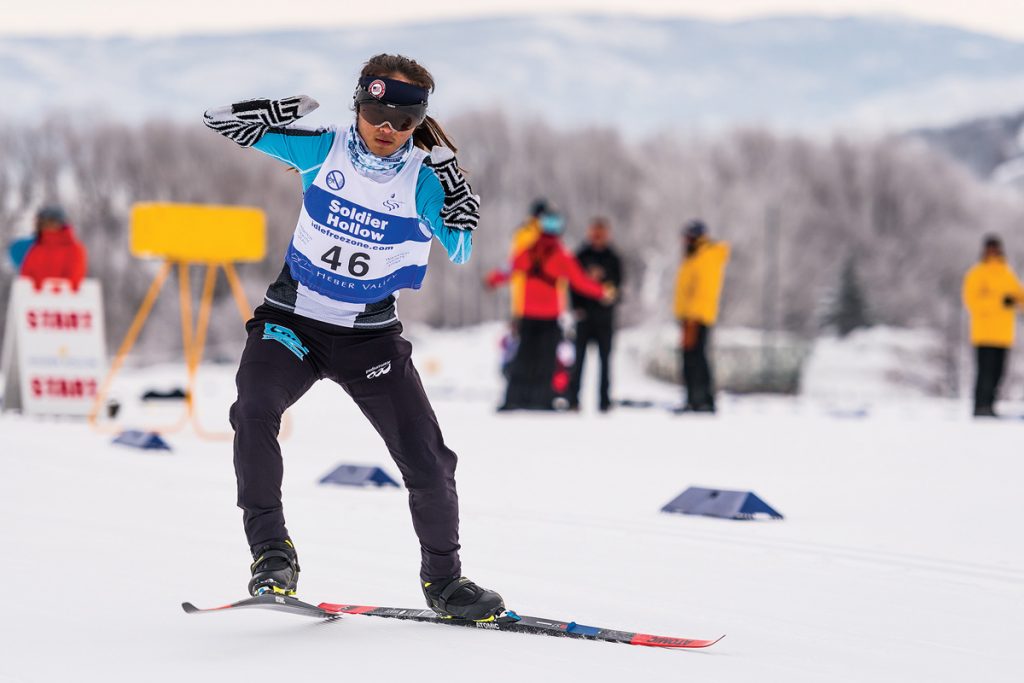Michael LeBlanc is a quintessential high school student. The 18-year-old senior at Groves Academy in St. Louis Park, Minnesota, is a member of student council, is taking accelerated college courses and is a student mentor. But as an athlete, he’s striving for something bigger. LeBlanc is a member of the development group of the U.S. Paralympic Team and has his sights set on the 2022 Beijing Winter Paralympic Games. LeBlanc was born without certain muscles and bones in his hands and arms, and he races in the Standing Skier Sport Class LW 5/7, which means he does not use poles. But his racing ambitions extend beyond himself, and through volunteering with the U.S. Paralympic Development Program and alongside development coach Beth Anne Chamberlain, he’s working to inspire other adaptive kids to become incredible skiers, too. —Hansi Johnson

In sixth grade, my friend and her family introduced me to the winter fun of XC. The snow felt calming and peaceful. I learned to skate ski first and then I moved on to classic skiing, which I now prefer because I like to climb more than descend. From there I joined the high school team and learned to ski fully. In my junior year of high school, I joined Loppet Nordic Racing (LNR) in Minneapolis, Minnesota, and started working with coach Chris Harvey, because I wanted to take the next step and XC race in the Midwest Junior National Qualifiers (JNQs).
My favorite XC skiing terrain are uphills—I seem to feel more relaxed and recover there. Racing without poles takes a huge amount of core strength and agility. Downhills can be challenging, but if I fall, I just get back up and keep going.
I like racing at a higher level, because I get to show my skill. But I also get to show that there are many different types of athletes. I race with able-bodied skiers, in JNQs, and I am racing knowing I won’t get first but to show that an adaptive athlete can still kick butt.
Throughout high school, I have pushed myself as a scholar, athlete and member of my community. Since I was little, I was always outside, not wanting to come back in. I spent hours exploring the nature around me. As a Nordic skier, I am outside for training all year. I was taught to lead, to leave it all out there on the course and to learn from others. I have developed strong leadership skills and learned to work as a team. I have gained much from others, both in school and being on a team.
My biggest accomplishment so far in XC skiing is going to Finsterau, Germany, for a World Cup. I raced in three races in Finsterau: the biathlon, a sprint and a 15 km event. The sprints and mid-distance are the best for my racing, in my opinion. I also volunteer with learn-to-ski clinics, introducing XC to young, adaptive kids. The Paralympic movement motivates me to volunteer with others, and I love to get others involved.
Back in the classroom, one of my teachers encouraged me to “just go for it.” These four words were shared with me by Ms. O, my math teacher, three years ago and have been with me ever since. I believe that hard work and a “just go for it” attitude pays off. XC ski racing has taught me to leave it all on the course; to put all you can into each race. Racing has taught me to give everything I do in my life my full attention and effort.
This story first appeared in the Late Winter 2020 issue of Cross Country Skier (#40.3).